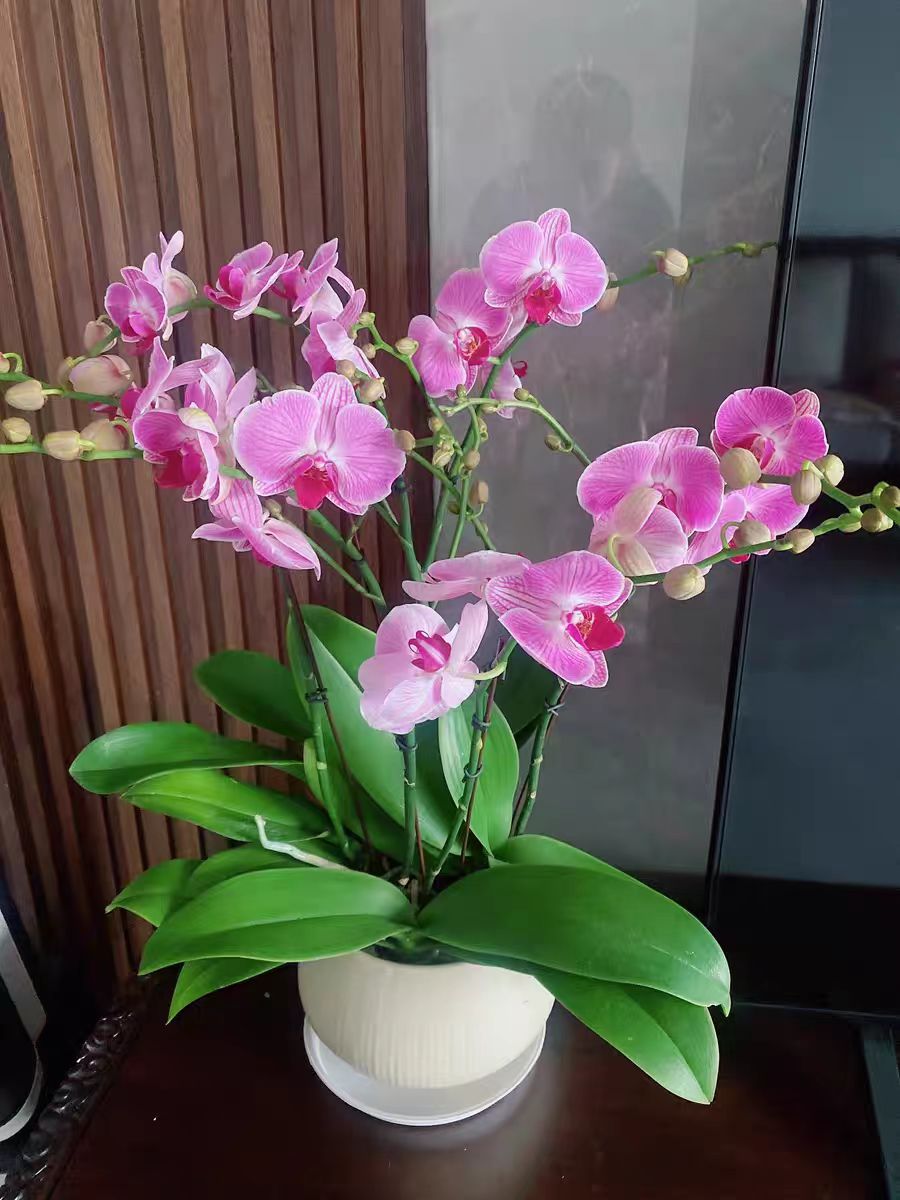Many people find that the Phalaenopsis plant stops growing for a long time after pruning, and the expected sprouting of new buds and reblooming do not occur. What exactly causes the Phalaenopsis not to grow after pruning? And how should it be pruned correctly?
Reasons why the Phalaenopsis doesn't grow after pruning:
Inappropriate pruning timing: The growth and dormancy of the Phalaenopsis have a certain regularity. If pruning is carried out during its dormant period, the physiological activity of the plant is relatively low, and its ability to heal wounds and sprout new branches is weak, making it prone to growth stagnation. For example, when pruning in a low-temperature environment in winter, the Phalaenopsis grows slowly and may show no signs of new growth for a long time. In addition, right after the flowering period ends, the plant has consumed a large amount of nutrients. Pruning immediately at this time without giving it time to recover will also affect its subsequent growth.
Incorrect pruning method: Over-pruning is a common problem. Some flower enthusiasts cut off a large number of branches and leaves in order to make the plant's shape more beautiful. This seriously damages the photosynthetic organs of the Phalaenopsis, making it unable to produce enough nutrients to support new growth. In addition, if the pruning tools are not sharp, it will cause the wounds to be torn and uneven, increasing the risk of pathogen infection, delaying wound healing, and hindering the growth of the plant.
Poor maintenance and management: After pruning, the Phalaenopsis needs a suitable growth environment to recover and grow. If watering is excessive, causing waterlogging in the potting soil, the roots will lack oxygen, resulting in root rot, which will affect the plant's absorption of nutrients and water, and thus stop its growth. Improper fertilization, such as a too-high fertilization concentration, will burn the roots; insufficient fertilization, with the plant lacking the necessary nutrients for growth, will also lead to slow growth or even stagnation. At the same time, insufficient light or inappropriate temperature will prevent the Phalaenopsis from carrying out normal physiological activities and inhibit its growth.
The correct pruning method for the Phalaenopsis:
Post-flowering pruning: When the flowers of the Phalaenopsis wither, pruning should be carried out in a timely manner. For the flower stem that has bloomed in the current year, if you want it to bloom again, you can keep 2 - 3 nodes above the base of the flower stem and cut it obliquely from the internode. In this way, there is a possibility that new flower buds will sprout from the retained nodes of the flower stem and bloom again. If you don't want it to bloom again, or if the flower stem is already aged, you can cut off the entire flower stem from the base of the flower stem to reduce nutrient consumption and promote the plant's recovery and growth.
Daily pruning: During daily maintenance, the withered and diseased leaves of the Phalaenopsis should be promptly cut off. These leaves not only affect the appearance of the plant but also consume nutrients and may become a hotbed for the spread of pathogens. When pruning, cut them off close to the base of the leaves, and be careful not to damage the healthy stems. In addition, for branches that are too densely grown, appropriate thinning can also be carried out to improve the ventilation and light conditions of the plant, which is beneficial to its healthy growth.
Pruning tools and precautions:
Sharp and clean gardening scissors or pruning shears should be used to prune the Phalaenopsis. Before pruning, the tools can be disinfected with alcohol or a carbendazim solution to avoid pathogen infection of the wounds. The pruning operation should be clean and decisive to ensure that the wounds are smooth. After pruning, apply carbendazim powder to the wounds to prevent the invasion of pathogens and promote wound healing. At the same time, the pruned Phalaenopsis should be placed in an environment with good ventilation and sufficient scattered light for maintenance. Keep the potting soil slightly moist and do not fertilize temporarily. After the plant recovers its growth, gradually resume normal maintenance and management.
By understanding the reasons why the Phalaenopsis doesn't grow after pruning and mastering the correct pruning method, the Phalaenopsis can regain its vitality after pruning. Flower enthusiasts should observe and summarize more during the maintenance process, and flexibly adjust the pruning and maintenance strategies according to the growth status of the Phalaenopsis to create their own beautiful flower scenery.
Why doesn't the Phalaenopsis grow after pruning?

Share with
Tagged in :




Leave a Reply